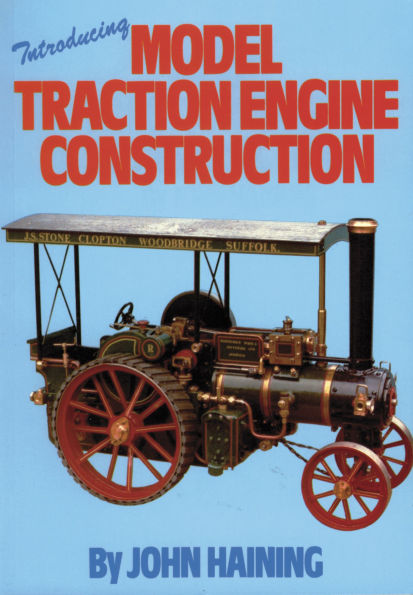Introducing Model Traction Engine Construction
Those of an engineering bent who wish to make a live steam model have a basic choice between a railway locomotive, a stationery engine, a marine engine or a traction engine in one form or another. The locomotive needs a track, the marine engine a hull and a stretch of water, but a traction engine can run on any area of reasonable ground. Coupled with the enormous growth of interest in preserving and running full—sized engines at agricultural shows and steam rallies, it is no wonder that traction engine models are so popular. In this book, John Haining, the doyen of traction engine modelling, explains what is involved in the construction of working steam models and outlines briefly the history and variety of such engines. A degree of reader familiarity with normal machine work and workshop practice is assumed, but even the inexperienced lathe owner will easily follow the procedures with the aid of the many clear illustrations provided by the author and will be encouraged to try his hand at this fascinating branch of model engineering.
1003755283
Introducing Model Traction Engine Construction
Those of an engineering bent who wish to make a live steam model have a basic choice between a railway locomotive, a stationery engine, a marine engine or a traction engine in one form or another. The locomotive needs a track, the marine engine a hull and a stretch of water, but a traction engine can run on any area of reasonable ground. Coupled with the enormous growth of interest in preserving and running full—sized engines at agricultural shows and steam rallies, it is no wonder that traction engine models are so popular. In this book, John Haining, the doyen of traction engine modelling, explains what is involved in the construction of working steam models and outlines briefly the history and variety of such engines. A degree of reader familiarity with normal machine work and workshop practice is assumed, but even the inexperienced lathe owner will easily follow the procedures with the aid of the many clear illustrations provided by the author and will be encouraged to try his hand at this fascinating branch of model engineering.
14.95
In Stock
5
1

Introducing Model Traction Engine Construction
112
Introducing Model Traction Engine Construction
112Paperback
$14.95
14.95
In Stock

Product Details
| ISBN-13: | 9780852428054 |
|---|---|
| Publisher: | Specialist Interest Model Books Ltd |
| Publication date: | 12/31/1998 |
| Pages: | 112 |
| Product dimensions: | 5.80(w) x 8.20(h) x 0.40(d) |
About the Author
From the B&N Reads Blog
